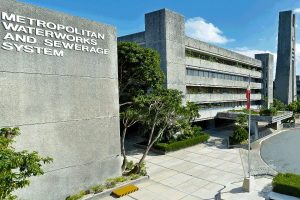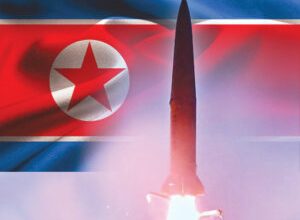Build Bigger Bolder Better Before

(Part 1)
Finally, the business world is assured that the much-discussed Maharlika Investment Corp. (MIC) is in the hands of very competent professionals steeped in top management experiences in finance, investment management, strategic planning, and project implementation. The recent appointments of Rafael Consing as CEO of the MIC and Vicky Castillo Tan, Andres Jerome Gan, German Lichuaco, and Roman Felipe Reyes as the four independent members of the board of directors have sent a good signal that the Government intends that the MIC is a completely independent long-term investment fund run by professionals with all the required qualifications and experiences that will guarantee both the profitability of the Fund as well as the attainment of the development-oriented goals for which it was constituted by the Philippine Congress and approved by the President.
As a development economist, academician, and independent director of a good number of corporations myself, I give the least importance to the academic degrees of the people appointed to the MIC but the highest importance to their work experiences as indicated by the various professional positions they have held over the last 20 to 30 years. I know of so many top professors in economics and finance with the highest degrees from the best universities in the US and elsewhere but who have spent practically their whole professional life teaching (with little business experience) who would not have qualified for a position in the MIC. It is about time that at both the leadership positions of our society and the skilled workers’ level, we get rid of our obsession with academic degrees and focus more on skills and experiences relevant to the position or job at hand.
It was also refreshing for me to read what MIC CEO Rafael Consing announced his investment priorities will be when he takes over the top management of MIC. He was quoted as saying that he aims to steer the fund towards projects in such critical sectors as energy, agriculture, and infrastructure (while actively seeking investments from both domestic and international sources). He would like to focus strategically on infrastructure flagship projects (IFPs) with 30 of them falling under Public-Private Partnership (PPP). This focus is exactly what the Philippine economy needs to be able to attain an investment-to-GDP ratio of more than 30% (from present levels at the low 20s), to grow the agricultural sector at 2% to 3% annually by significantly improving productivity through capital-intensive agribusiness ventures, and attaining lower prices of electricity which in turn will increase the attractiveness of the Philippines to foreign investors in manufacturing. The attainment of these three strategic objectives will enable the Government to hit the higher range of its 6% to 8% GDP growth targeted by the Marcos Jr. Administration.
The 6% to 7% growth that the Philippine economy has attained annually since 2011 (with the exception of the pandemic period of 2020 to 2021) has been mainly spurred by consumption and government spending, including through the Build, Build, Build program initiated by the Duterte Administration which brought the infrastructure-to-GDP ratio to an all-time high of 5% to 6%. Because of the high cost of domestic capital and the high debt-to-GDP ratio of the Government, it is going to be very difficult to continue the Build, Build, Build Program on the basis of Philippine savings alone (which is already the lowest in the region at 10% of GDP). We need all the possible ways of actually increasing the flow of foreign direct investments (FDIs) into the Philippines, especially in the capital-intensive projects contemplated by Mr. Consing and hopefully his entire board.
In fact, the Infrastructure Flagship Projects mentioned by him are literally a drop in the bucket of what the National Economic and Development Authority (NEDA) has lined up for the entire duration of the Marcos Jr. Administration. The NEDA has identified 3,600 potential infrastructure projects worth $372 billion planned for implementation through 2028. That would mean attracting as much as $62 billion in FDIs annually for infrastructure projects that can already be owned 100% by foreigners under the amended Public Service Act. I think it would be reasonable for the Marcos Jr. Administration to target an ambitious $15-$20 billion in FDIs annually, considering that Vietnam whose economy is very comparable to that of the Philippines, has managed to attract close to $20 billion yearly in the last three to five years. The only difference is that most of the investments in Vietnam are labor-intensive manufacturing projects that are leaving China and are finding Vietnam more attractive than the Philippines because of lower electricity costs, lower wages, and long-time openness to FDIs. In our case, we will be targeting not mainly manufacturing investments but capital-intensive infrastructure, energy, and agribusiness projects.
More recently, NEDA updated the list by approving 194 high-impact priority projects worth P9 trillion, among them the rehabilitation of the decades-old Ninoy Aquino International Airport (NAIA). Out of the 194 IFPs, 123 are new, which means that only 71 were carried over from the previous Administrations, such as the ongoing Metro Manila Subway project started during the presidency of President Rodrigo Duterte, and the North-South Commuter Railway venture started during the government of President Benigno Aquino III. The NAIA rehabilitation was classified as a new project because it did not push through when it was proposed during the Duterte Administration. By late December 2023, the Department of Transportation (DoTr) received four proposals (down from eight earlier) for the P170.6-billion project. Bidders are the Manila International Airport Consortium (MIAC), Asian Airport Consortium, GMR Airport Consortium, and the San Miguel Corp. (SMC) SAP and Co. Consortium. These bidders are affiliated with some of the most prominent conglomerates in the country, with vast and long-term experience in the building of infrastructure.
In planning to invest in infrastructures, very important consideration should be given to the multiplier effects on two of the most promising service sectors in the Philippine future: tourism and BPO-IT.
The potential of the Philippines to attract foreign tourists is almost unlimited. The archipelago with its 10,000 miles of seashore has been judged all over the world as the “best beach destination” for foreign tourists, especially those who come from cold climates in Continental Europe, North America, and Northeast Asia. To add to this prestige is the reputation of the Palawan set of 2,000 islands as the Best Island Resort in the world, besting even the famous Bali in Indonesia (which unfortunately suffers from all the possible natural disasters such as volcanic eruptions, earthquakes, and tsunamis). Palawan only suffers from typhoons, which are quite mild at that.
These natural resources, however, are almost useless because of the very poor physical infrastructure prevailing in the country: congested airports and seaports (just consider what happened to the Norwegian Jewel cruise ship carrying 2,500 tourists who were crammed like sardines in a hall at Pier 5 in Manila that could accommodate only 1,000).
In planning for the building of the large infrastructure projects like airports, seaports, railways and subways, toll ways, telecom, water and energy facilities, the slogan should be Build, Bigger, Bolder, Better and Before. The Changi international airport should be the role model. The policy of the Singapore Government was to overbuild or to build “before” so that supply is not always trying to catch up with the demand. They are now at their 5th terminal in Singapore.
I am glad that both the national and local governments agree with the Asian Development Bank that, despite the seeming lack of present demand for its use, we have to build that bridge connecting Cavite through Corregidor to Bataan. The critics who maintain that there is still no present demand for such a bridge are failing in foresight. Build Before and they will come.
Use the most advanced technology available because obsolescence is happening faster than ever, especially in this age of Industrial Revolution 4.0. This means taking a very bold point of view. Especially as regards international airports, bigger is always better. Just imagine the day when we can attain the number of foreign tourists that Thailand has even today — 25 million. Whoever the foreign investors are that we can attract to build the international airports in Coron, Puerto Princesa, and San Vicente in Palawan should be told to at least approximate the size and amenities of the International Mactan Airport that was a result of a partnership between GMR, an Indian infrastructure company, and local construction firm Megawide. Today, it is owned and managed by the Aboitiz group.
(To be continued.)
Bernardo M. Villegas has a Ph.D. in Economics from Harvard, is professor emeritus at the University of Asia and the Pacific, and a visiting professor at the IESE Business School in Barcelona, Spain. He was a member of the 1986 Constitutional Commission.




